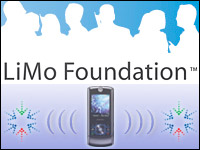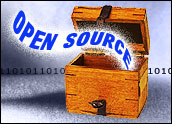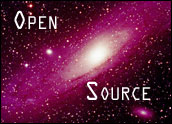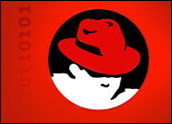
Desperately seeking their future, African countries that virtually no Western commercial software vendors have cared about in the past are turning to free and open software. They are doing so at a pace just quick enough to alarm some commercial software vendors, who fear the prospect of an entire continent dominated by free software in the future.
In Africa, where the average cash yearly income often amounts to just hundreds or perhaps a few thousand dollars per capita, the virtually unattainable cost of new hardware works against established commercial software vendors such as Microsoft. So does the lack of support for the used and refurbished hardware deployed several technology generations ago in the West. These formidable problems are propelling many in the developing world to the only legal alternative: free software.
“We represent how the world is going to use the hardware that people already own,” said Eben Moglen, a law professor at Columbia University who also works pro bono for free software causes. “Nobody is doing new MS software for 400 Mhz computers, and there simply is no market in the developing world for software at North American monopoly prices.”
“Their migration path isn’t to a new computer, it’s to free software,” Moglen told LinuxInsider. “This will become even more true with the release of Longhorn, which will require hardware that even most people in the developed world do not own today.”
Facing the Hardware Crisis
Many experts agree that the need for cheap, older, often refurbished hardware has helped free and open software, particularly Linux distributions.
“Hardware is an enormous challenge for users,” said Alastair Otter, who runs a Web site on software for Africa that emphasizes free and open development projects. “New hardware, even in South Africa, is expensive and in many other countries, unaffordable for most users. Many organizations are looking to refurbished PCs to solve this problem, but that [approach] brings with it the challenges of old hardware and to some degree, stigma. Linux is better equipped in this respect than most others.”
In addition, said Otter, most software for personal computers in the developed world presupposes a single user per computer, whether it’s located at home or at the office. This is a rare situation in Africa, and the networking and security aspects of Linux help to set up such group environments, as does the ability to customized source code to Africa’s culture and needs.
“Many users in Africa are likely to use PCs in a community and shared environment rather than in a personal, home-PC type way,” said Otter. “A lot of the applications in the OSS world are designed around high-end servers, and are [therefore] not of great consequence to African users. What [Africa] needs is more focus on local conditions and applications suited to local environments. Micro finance applications, for example, are the kinds of applications Africa could use well, given that most of the population is unbanked and of very meager income,” he said.
Proof of Concept
So far, the most successful African projects using free and open source software belong to the educational sector. This leads some to dismiss their efforts as not truly business- or enterprise-applicable, but many have high hopes that, like many of today’s Linux developers — including Torvalds, who authored the Linux 1.0 kernel while still a student — they’ll be able to transfer their university experience to broader endeavors. Recent Linux and free or open software wins include the following:
Using Linux and employing volunteers, the Foundation’s tuXlabs program can install 25-thin-client laboratories for around R25000-R30000 ($4,035-$4841) each, which is less than a quarter the price of even the cheapest proprietary installation.
Still, even educational users face obstacles that aren’t common in the developed world. “The challenges of bandwidth mean that Africa needs access to software but can’t download it. Or if they can the costs of telecommunications destroy the value proposition,” said Otter.
This has meant that free software evangelizers have even had to re-think basic distribution; the Shuttleworth Foundation, for example, sends free CDs for direct download onto local machines.
Ease of Use
“On the upside, it [NGO-in-a box] is a great tool for allowing users to access and try software for the first time,” said Otter. The downside, he said, is that the group is less able to achieve the level of distribution of freeware releases in developed countries, where downloading is easy.
“Easy to use” means something different here.
Free software has often been criticized for being more difficult to use than shrink-wrapped commercial software, but “ease of use” often means something different to Africans. Perhaps most important to many there is the ability to adapt it to community needs, and to support group efforts in a social way.
“The school community does not only realize the cost effectiveness of Linux Terminal Server network but the ease of use of the software,” said Hilton Thiessen, open-source project manager at the Shuttleworth Foundation. “Many are blown by the fact the volunteer developers build this software that allows them not to only use it but make copies for learners, teachers and their parent community,” he said.
Thiessen said that each school in the Shuttleworth program arranges a monthly open day where educators explain open-source software to the community, showcase certain packages such as openoffice.org, and provide copies of software for their use and distribution.
Bridging the Divide
“This offers huge benefits for the community, where many cannot afford approx $300 for a propriety OS and office suite, definitely a factor that has played a major role in the digital divide among South African society,” said Thiessen.
Still, the free and open software communities face many obstacles, and ironically, one of the biggest of these is piracy. An October 2004 Gartner report estimates that as many as nine percent of new PCs shipped with Linux in 2004, well above the worldwide average of 4.4 percent. However, between 40 and 80 percent of these will be used to run a pirated version of Windows, the research firm reports.
Gartner did not estimate how many used and refurbished computers now run Linux, rather than the version of the Windows operating system loaded onto it at the manufacturer or reseller, but it is thought to be much higher in Africa than in the developed world.
One of the most important recent developments in the future of free software in Africa is the drive to translate and adapt free and open software to Africa’s many national languages, many of which are neglected, disappearing, or ignored by globally oriented, mass-market commercial software vendors. Many observers say that the recent South African Ubuntu release, a distribution that includes translations into most of the country’s thirteen national languages, is a major milestone in making free and low-cost software widely available in Africa.
Preserving Languages
“National language pressure is pushing the distribution of free software in very important ways,” said Columbia’s Moglen. “Nobody in the monopoly software world is going to publish a distribution in those thirteen languages. The very issue of preservation of human language is going to be a very important force in pushing free software,” he predicted.
But the “free” in “free software” does not mean that Africans perceive the no-cost aspect as an unqualified advantage. In particular, some are put off by the very idea that a monetary edge is more important than the philosophical roots of the Free Software movement.
“In fact, while it is an advantage, [no] cost potentially diminishes the importance of the Free Software phenomenon,” said Nhlanhla Mabaso, who heads the Council for Scientific and Industrial Research’s Pretoria site. “In the South African context, it would be a bit like arguing for freedom against apartheid on a cost-benefit basis. Imagine if someone told you that the total cost of ownership for maintaining an apartheid state were higher or lower than freedom and democracy!”
Rather, said Mabaso, the Free Software movement intrigues many African activists because it fits in with national aspirations and philosophies.
“A compelling reason is the technological freedom that comes with Free Software [as advocated by Richard Stallman and others]. For a developing country, the technological freedom that comes with Free Software is important because it provides space to innovate without limits,” said Mabaso.





















































Today Microsoft announces plans to expand support for Swahili:
http://techsoup.org/news/news_article.cfm?newsid=1677
http://iht.com/articles/2004/11/12/news/swahili.html
OpenOffice.org on Swahili:
http://www.openoffice.org/editorial/interview_alberto_escudero.html
http://www.kilinux.org/